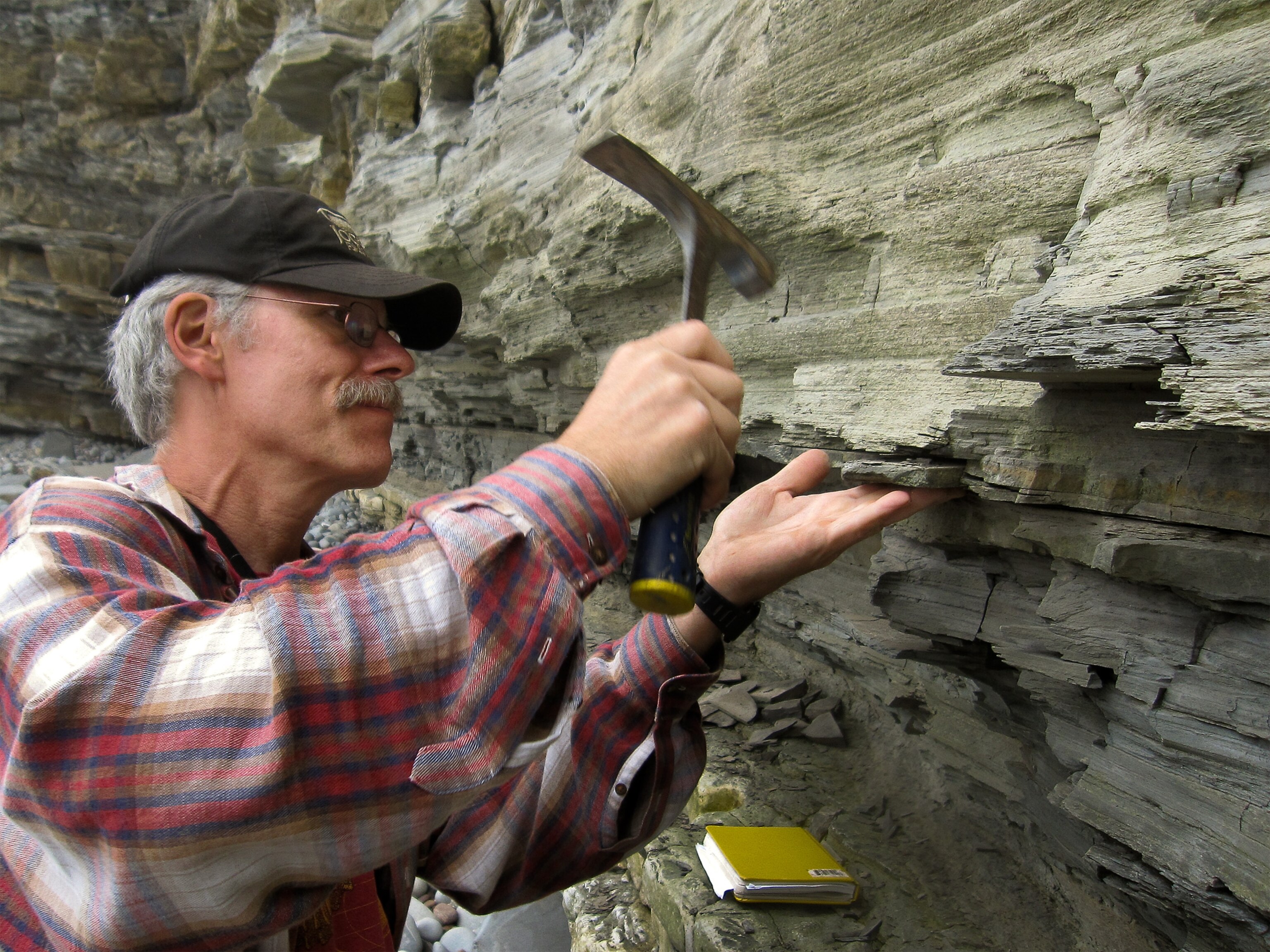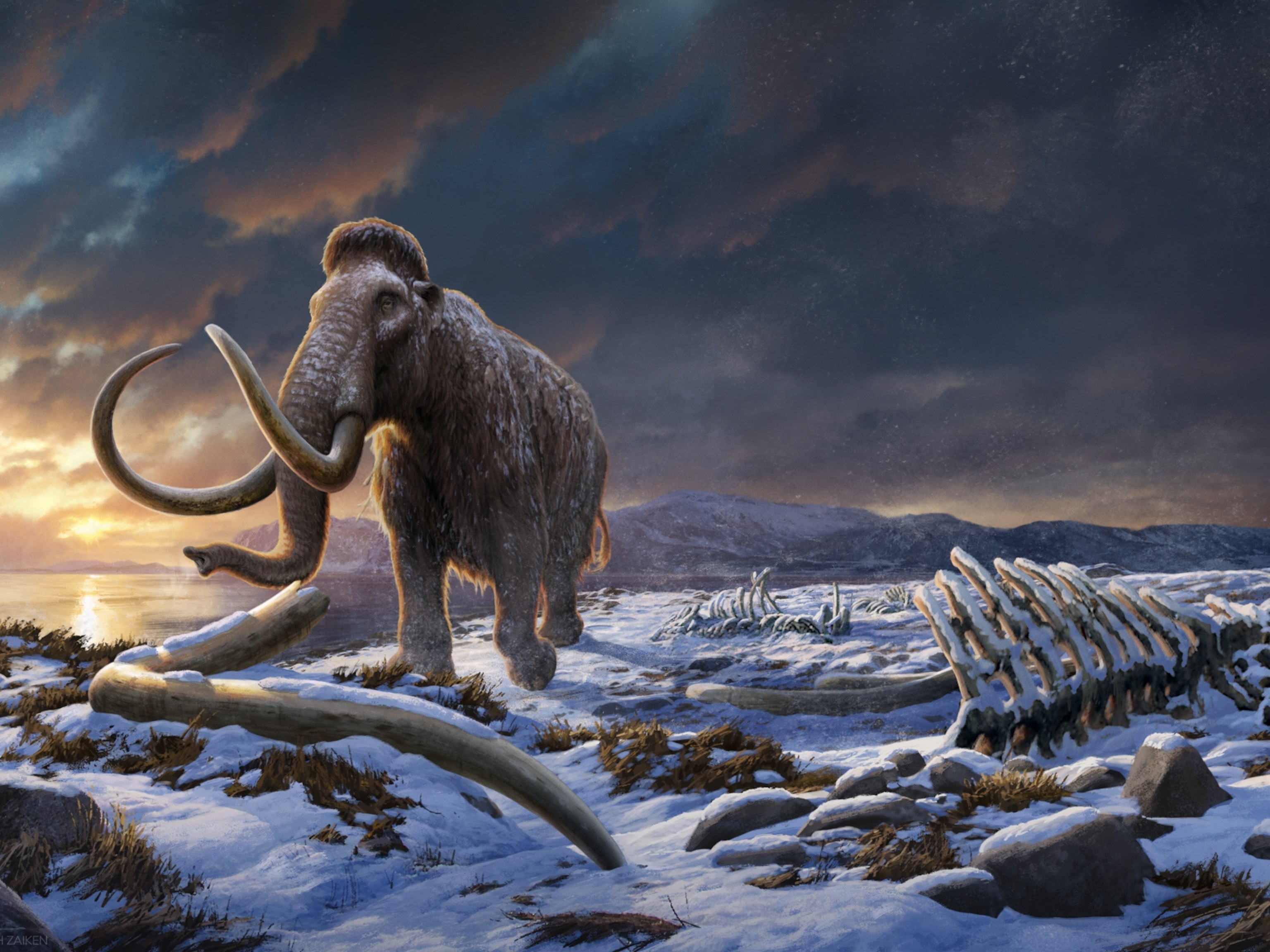
Mega-eruptions Caused Mass Extinction, Study Finds
Behind the extinction that wiped out at least half of Earth’s species.
At the end of the Triassic period, at least half of the species living on land and in the ocean went extinct, opening the way for dinosaurs to dominate Earth for the next 135 million years. Scientists have long suspected massive volcanic eruptions were to blame, but they haven’t been able to pin down the exact timing until now.
In a new study published today in the journal Science, researchers say they have confirmed that eruptions large enough to bury the U.S. under 300 feet (91 meters) of lava occurred at the same time that vast numbers of plant and animal species disappeared from the fossil record.
About 201 million years ago, tectonic forces started ripping the supercontinent known as Pangaea apart, said Terrence Blackburn, a geologist at the Carnegie Institution for Science in Washington, D.C., and lead author of the study.
The underlying mantle rock melted, generating these large eruptions, he added.
The rift, which eventually created the Atlantic Ocean basin, happened between sections of Pangaea that would go on to become North America and Africa. (Read about how Pangaea formed.)
These huge eruptions, or flood basalt events, occurred during four periods over 600,000 years, but it’s the first bout of volcanism that contributed to the death of so many organisms, said Blackburn.
Some ancient crocodilian ancestors, eel-like animals called conodonts, and a mammalian group called therapsids were all hammered, with many disappearing from the fossil record around this time.
Time Capsule
Until now, the margin of error in calculating the timing of these eruptions ranged between one and three million years, leading to uncertainty over which happened first—the eruptions or the mass extinction.
But by using a rare mineral called zircon, found in igneous rocks like basalts, the researchers were able to narrow down their margin of error to 20,000 to 30,000 years—pegging the initial eruptions to just before the mass extinction event.
“Zircon is a perfect time capsule for dating those rocks,” said Blackburn. When the mineral crystallizes, it incorporates uranium, which decays over a known time with respect to the element lead. By measuring the ratio of uranium to lead in our samples, we can determine the age of those crystals, he explained.
By accurately placing the extinction event at the onset of the eruptions, climate modelers and other scientists may be able to pinpoint specific mechanisms like climate change that provoked the extinctions, Blackburn said.
There is evidence that the initial volcanic eruptions doubled the amount of the carbon dioxide in the atmosphere, which led to increased global temperatures and ocean acidification, he noted. This happened quickly, which probably didn’t give organisms at the time much of a chance to adjust to the changes. (Learn more about ocean acidification.)
Life did show signs of recovery during later eruption episodes, Blackburn said, which he found surprising.
These later eruptions didn’t result in as much lava as that initial eruption, but other researchers have shown that atmospheric carbon dioxide still increased after each event, possibly maintaining climatic conditions present during the mass extinction.
Researchers aren’t sure how the species that made it through the extinction event were able to deal with the new climate.
Pushed Aside
All mass extinction events are correlated with major eruptions, said Paul Renne, a geologist who specializes in figuring out the age of rocks at the Berkeley Geochronology Center in California. But the significance of volcanic eruptions in wiping out major groups of organisms has been pushed aside in favor of hypotheses that hold asteroid impacts responsible.
There is one case 65 million years ago, at a point in time known as the Cretaceous-Tertiary boundary (K-T boundary), with strong evidence supporting an asteroid impact around the same time the dinosaurs disappeared.
“That one instance really guided everybody’s thinking, and the idea that impacts caused mass extinctions was really, really popular,” said Renne, who wasn’t involved in the Blackburn study.
But he believes that major volcanic eruptions have been a driving force in mass extinctions and that this latest study by Blackburn and colleagues tightens the correlation between the two events at the end of the Triassic.
Renne says that even the asteroid impact at the K-T boundary likely only finished the job that major volcanic eruptions in India started. (Related: “What Killed Dinosaurs: New Ideas About the Wipeout.”)




